Greece’s island-hopping experience varies dramatically depending on when you visit and which archipelago you choose to explore.
While summer guarantees sun and frequent ferries, each season offers distinct advantages, as well as drawbacks, for different island groups.

Here’s your comprehensive guide to planning the perfect Greek island adventure.
Contents of The Ultimate Guide to Greek Island Hopping: Best Times by Season and Archipelago
- Understanding Greece’s Ferry Seasons
- The Cyclades: Year-Round Accessibility with Seasonal Trade-offs
- The Dodecanese: Southern Warmth with Seasonal Variations
- The Sporades: A Summer-Focused Archipelago
- The Ionian Islands: The Western Exception
- The Saronic Islands: The Commuter-Friendly Choice
- The North Aegean: For Adventurous Planners
- Strategic Planning Tips
- The Verdict
Understanding Greece’s Ferry Seasons
Most people seeking to hop from one island to the next consider using public ferry services. Even though there are many Greek islands with airports, there are no direct flight routes between islands. All routes pass through Athens, so flying isn’t always an option for your island hopping adventures.
Before diving into specific archipelagos, it’s crucial to understand that Greek ferry schedules follow a seasonal rhythm.
High season (late June through August) brings maximum frequency and routes, shoulder seasons (April-May and September-October) offer moderate service, and winter (November-March) sees dramatically reduced connections, with some smaller islands accessible only a few times per week. Some routes may only be available during summer.
The seasonality of ferry routes is somehow similar to public transport in big cities. Buses and trains run at higher frequency during the rush hours, and less frequently outside these intervals or during weekends.

The Cyclades: Year-Round Accessibility with Seasonal Trade-offs
Spring (April-May)
This is arguably the best time for Cyclades hopping. Ferries run frequently enough to reach all major islands (Mykonos, Santorini, Paros, Naxos, Milos), wildflowers cover the hillsides, and crowds haven’t arrived yet.
Temperatures hover around 20-25°C, perfect for hiking and exploring. Some smaller islands like Folegandros and Koufonisia may have limited weekly connections, but the main routes from Piraeus operate daily.
Check out this Cyclades islands hopping itinerary.
Summer (June-August)
Peak season means maximum ferry frequencies. You can hop between islands daily, sometimes multiple times per day on popular routes.
However, expect crowded boats, fully booked accommodations, and prices at their highest.
The meltemi winds can be strong, occasionally causing cancellations. If you don’t mind the crowds and heat (often exceeding 38°C), summer offers the most flexibility.
Fall (September-October)
The sweet spot for many travelers and my favorite season of all.
Sea temperatures remain warm, ferry schedules are still robust through September (though they start reducing in October), and prices drop significantly.
By late October, connections to smaller islands like Anafi or Sikinos become less frequent, requiring more careful planning.
Winter (November-March)
Only recommended for travelers seeking solitude who don’t mind limited options.
Major islands like Syros, Paros, and Naxos maintain several weekly connections to Piraeus, but crossings between islands become rare. Many hotels and restaurants close.
That said, experiencing the authentic, local side of these islands can be magical for the right traveler. I spent one winter in Crete and loved it to bits.

The Dodecanese: Southern Warmth with Seasonal Variations
Spring and Fall
These shoulder seasons are ideal for the Dodecanese. The southern location means warmer temperatures year-round, and ferry services remain quite good from April through October. Rhodes and Kos, being major hubs, maintain excellent connections.
Islands like Symi, Kalymnos, and Patmos are easily accessible, while more remote destinations like Tilos or Kastelórizo require more attention to schedules but remain reachable.
Summer
Excellent ferry connectivity, but Rhodes and Kos can feel overrun with package tourists. The heat is intense, regularly exceeding 35°C, though the sea provides relief. If you’re targeting smaller islands like Halki or Lipsi, summer ensures you won’t be stranded.
I’ve been on Symi on a hot August day. The air temperature exceeded 42 degrees C. Rubber shoes were melting at the contact with the hot asphalt. Brains were melting. Blood was boiling. I didn’t dare to climb the hills to enjoy Symi to the full. I’ll return for a longer stay, but I’ll make sure to plan it for the fall.
Winter
The Dodecanese maintains better winter service than most archipelagos, thanks to its larger islands and proximity to Turkey. Rhodes, Kos, and Kalymnos have regular ferries year-round, but reaching smaller islands becomes challenging.
Winter is surprisingly viable here if you stick to major islands and don’t mind occasional rough seas.
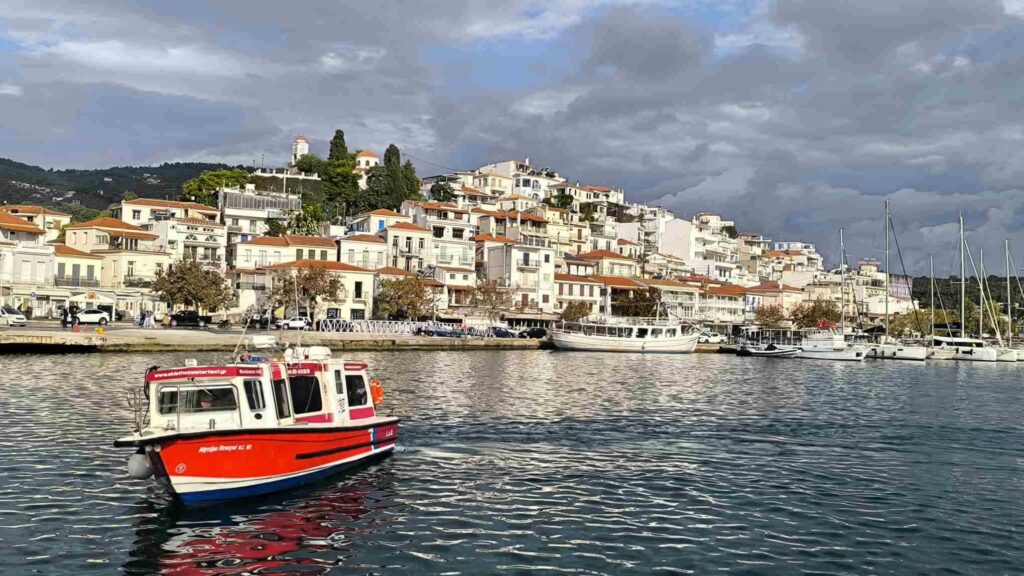
Skiathos Town is the capital of the island, spreading over the hills on the coast
The Sporades: A Summer-Focused Archipelago
Summer (June-August)
This is really the only practical time for comprehensive Sporades hopping. Skiathos, Skopelos, and Alonissos have daily ferry connections from Volos and Agios Konstantinos on the mainland, plus frequent inter-island services.
The lesser-known Skyros has several weekly connections. The lush, green landscape and sheltered waters make this archipelago particularly appealing during the hot summer months.
Spring and Fall
Limited but possible. By May, services are ramping up, and through September, you can still hop relatively easily. However, as you noted, fall and winter present real challenges.
By October, ferry frequencies drop significantly, and by November, reaching all inhabited islands in a single trip becomes quite difficult without careful planning and flexibility.
I’ve visited Skiathos and Skopelos by mid-October, flying into Skiathos from Bucharest, Romania, and then ferry to Skopelos with same day return. We’ve got about 6 hours on Skopelos, just enough to properly visit Chora and to enjoy some traditional pies.
Here’s my brief guide to Skopelos. Or may be you want to read more about Skiathos.
Winter
Essentially off-limits for island hopping. Ferry services become sparse, with some islands having only 2-3 weekly connections. The Sporades are particularly affected because they rely heavily on tourist traffic. Skyros, in particular, becomes quite isolated.
Unless you plan to stay put on one island, winter is not recommended here. Should you wish to spend your winter here, you’ll want accommodation somewhere in the port, in order to have easy access to shops and restaurants.
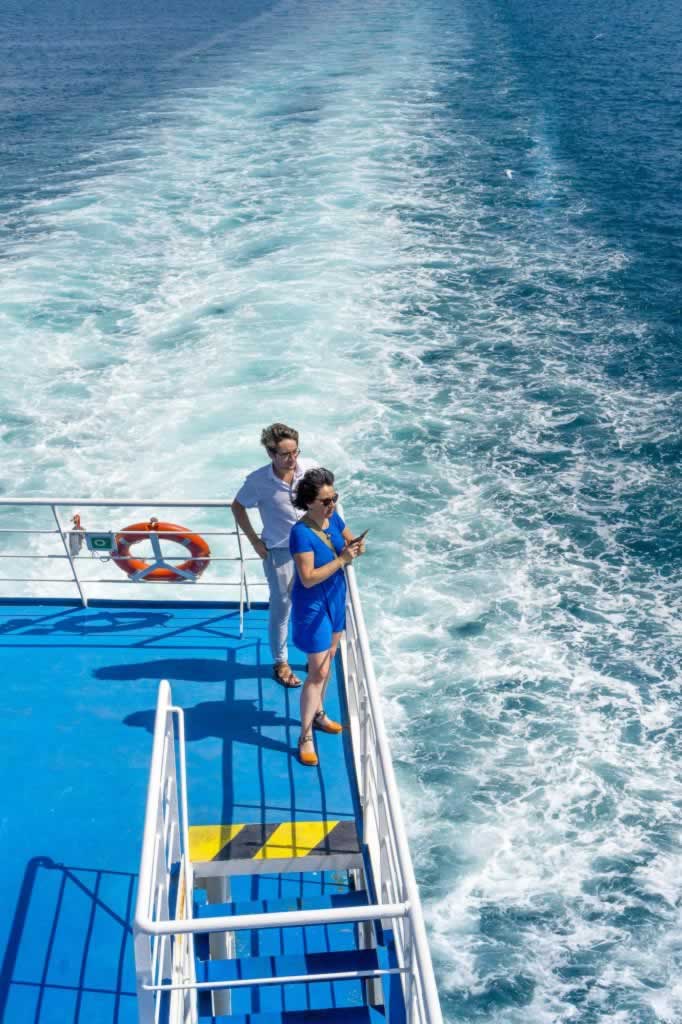
The Ionian Islands: The Western Exception
Spring through Fall (April-October)
The Ionian Islands operate somewhat independently from the Aegean’s ferry network, with many travelers using the western mainland ports (Igoumenitsa, Patra) or flying into Corfu. Ferry services here are reliable throughout the warmer months, connecting Corfu, Paxos, Lefkada, Kefalonia, Ithaca, and Zakynthos.
The greener landscape and slightly milder temperatures make spring and fall particularly attractive.
Summer
Busy but manageable, with excellent connections. The Ionian Islands attract a different crowd, more Italian and Northern European tourists. They feel less frantic than the Cyclades, despite good visitor numbers.
Winter
Better than the Aegean for winter travel, with regular ferry services to major islands year-round, particularly to Corfu and Kefalonia. However, many tourist services close, and inter-island connections reduce significantly.
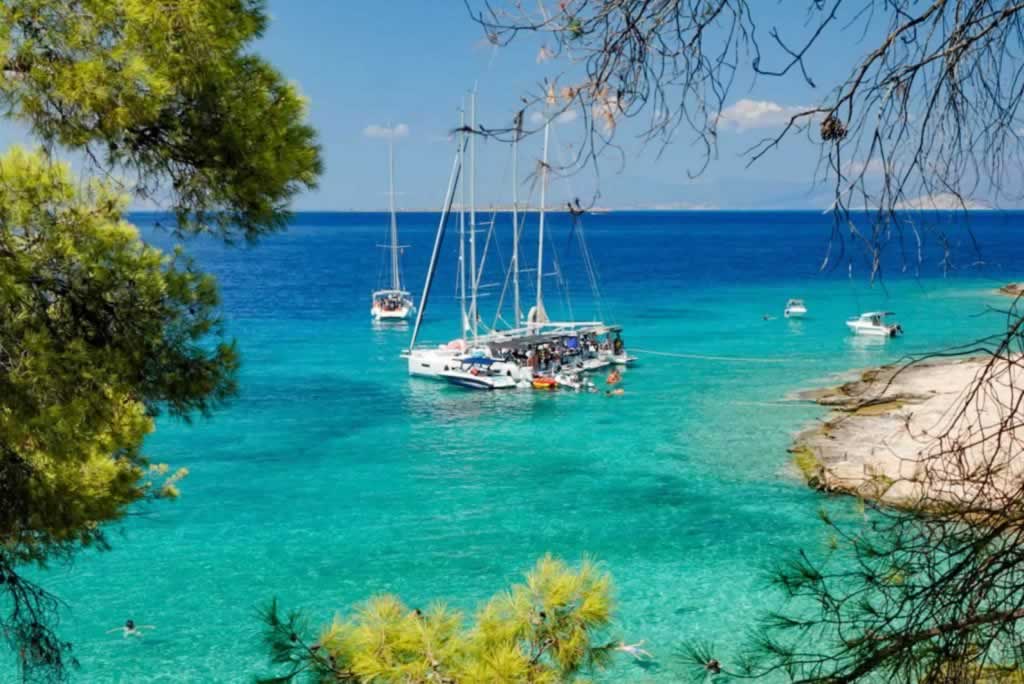
The Saronic Islands: The Commuter-Friendly Choice
Year-Round
These islands near Athens (Aegina, Poros, Hydra, Spetses) maintain the most consistent ferry services throughout the year, operating almost like maritime commuter routes. While summer offers the most frequent departures, winter schedules remain robust enough for island hopping any time of year.
Best Time
Spring and fall offer the ideal balance—frequent ferries, pleasant weather, and manageable crowds. Weekends year-round can be busy with Athenians escaping the city.
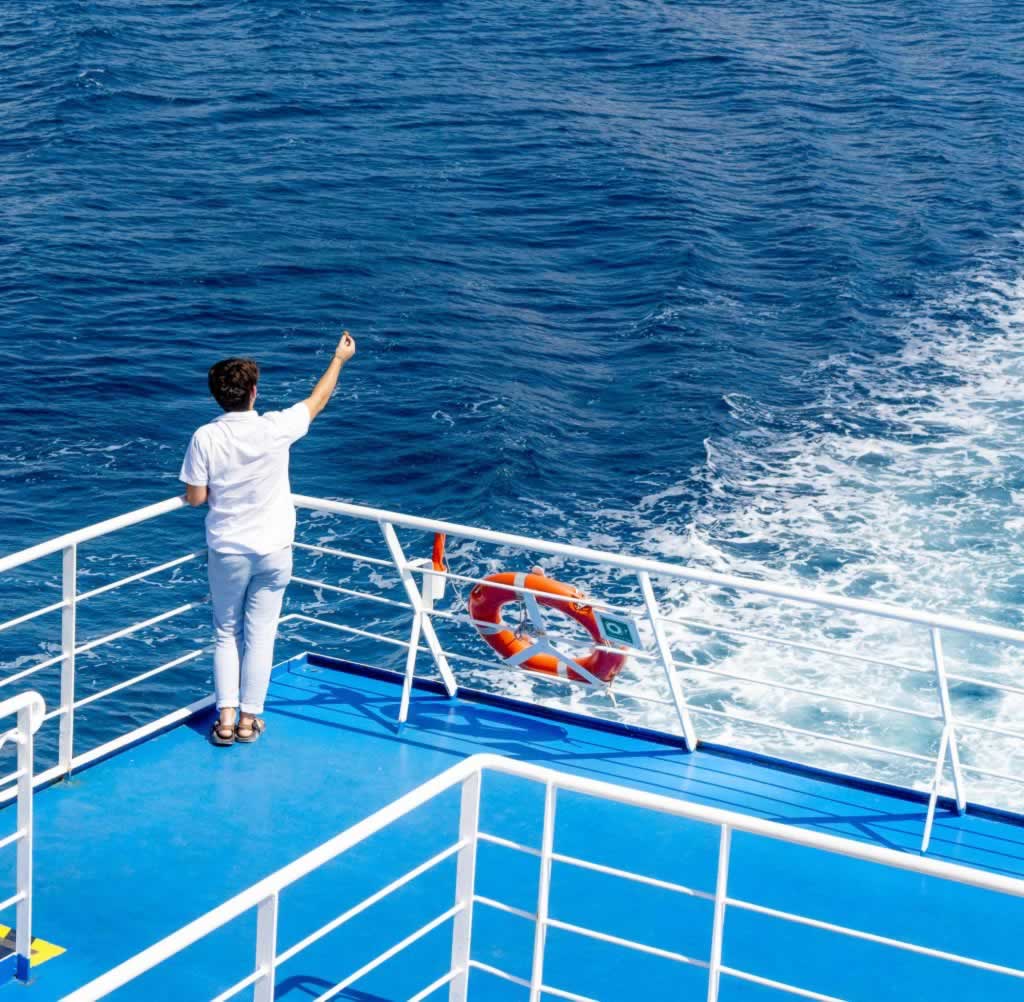
The North Aegean: For Adventurous Planners
Summer
Essential for hopping these dispersed islands (Lesvos, Chios, Samos, Ikaria, Limnos). While each major island has year-round connections to Piraeus, inter-island ferries are limited even in summer. This archipelago requires the most careful route planning, as you might need to return to the mainland to reach your next island.
Off-Season
Only for travelers focusing on one or two islands. The North Aegean islands are large and culturally rich enough to warrant extended stays, but hopping between them off-season requires significant patience and flexibility.
Strategic Planning Tips
Mix and Match
Consider combining ferry travel with short domestic flights, especially in shoulder seasons. A quick flight from Athens to Rhodes or Mykonos can jumpstart your hopping adventure when ferry schedules are limited.
Hub Strategy
Base yourself on hub islands (Paros in the Cyclades, Rhodes in the Dodecanese) during shoulder seasons, taking day trips or overnight excursions to nearby islands.
Weather Wildcards
Even in summer, the meltemi winds (primarily affecting the Cyclades) can cause cancellations. Always build buffer days before flights home.
Book Ahead in Summer
While you can often buy tickets on the day during shoulder seasons, summer requires advance booking, especially for popular evening ferries and accommodations.
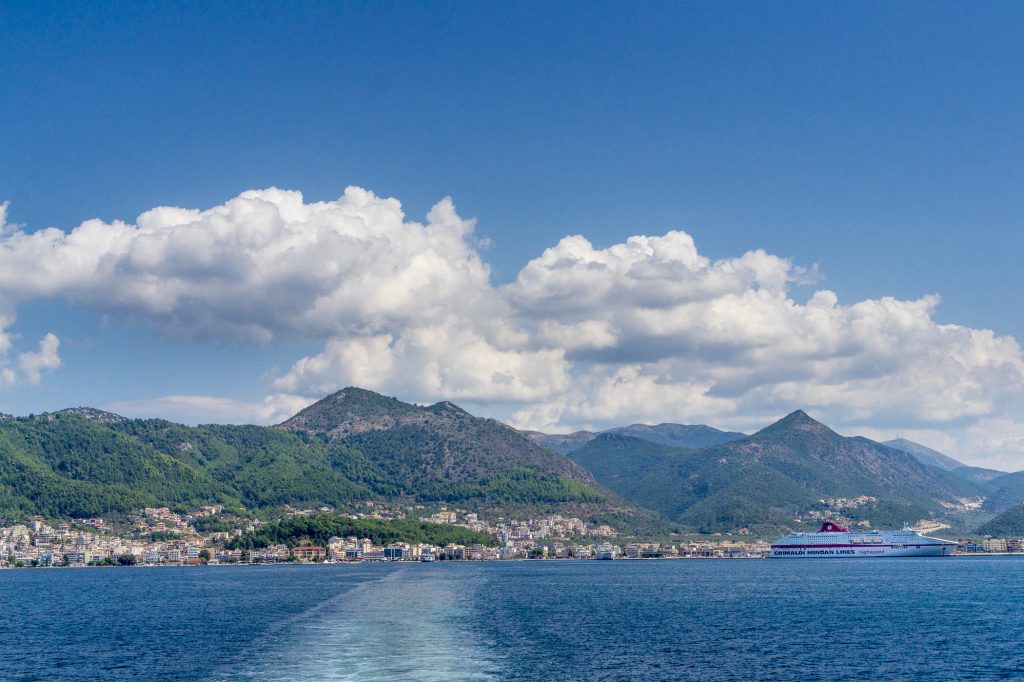
The Verdict
For maximum flexibility and ease, late May through early July and September offer the best overall experience across all archipelagos. You’ll enjoy warm weather, good ferry connections, and manageable crowds.
If you’re targeting the Sporades specifically, commit to July-August.
For the Cyclades or Dodecanese with some adventure tolerance, April-May and September-October provide the most rewarding experiences.
Winter island hopping is really only practical in the Saronic Gulf or on single-island deep dives in the Cyclades and Dodecanese.
Ultimately, the best time for your Greek island adventure depends on your priorities: chasing perfect weather and ferry reliability, avoiding crowds, or experiencing authentic island life when the tourists have departed and locals reclaim their shores.

